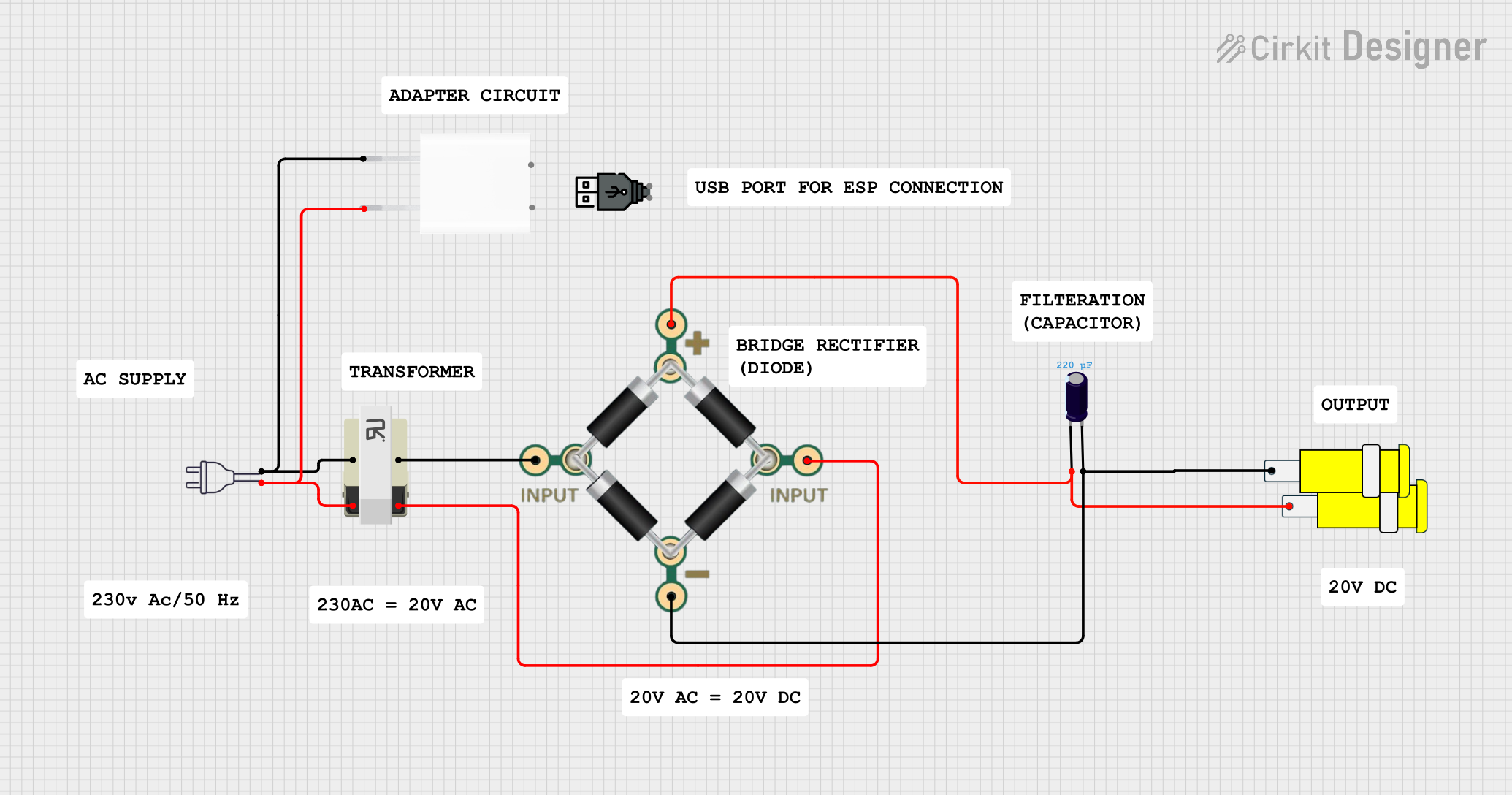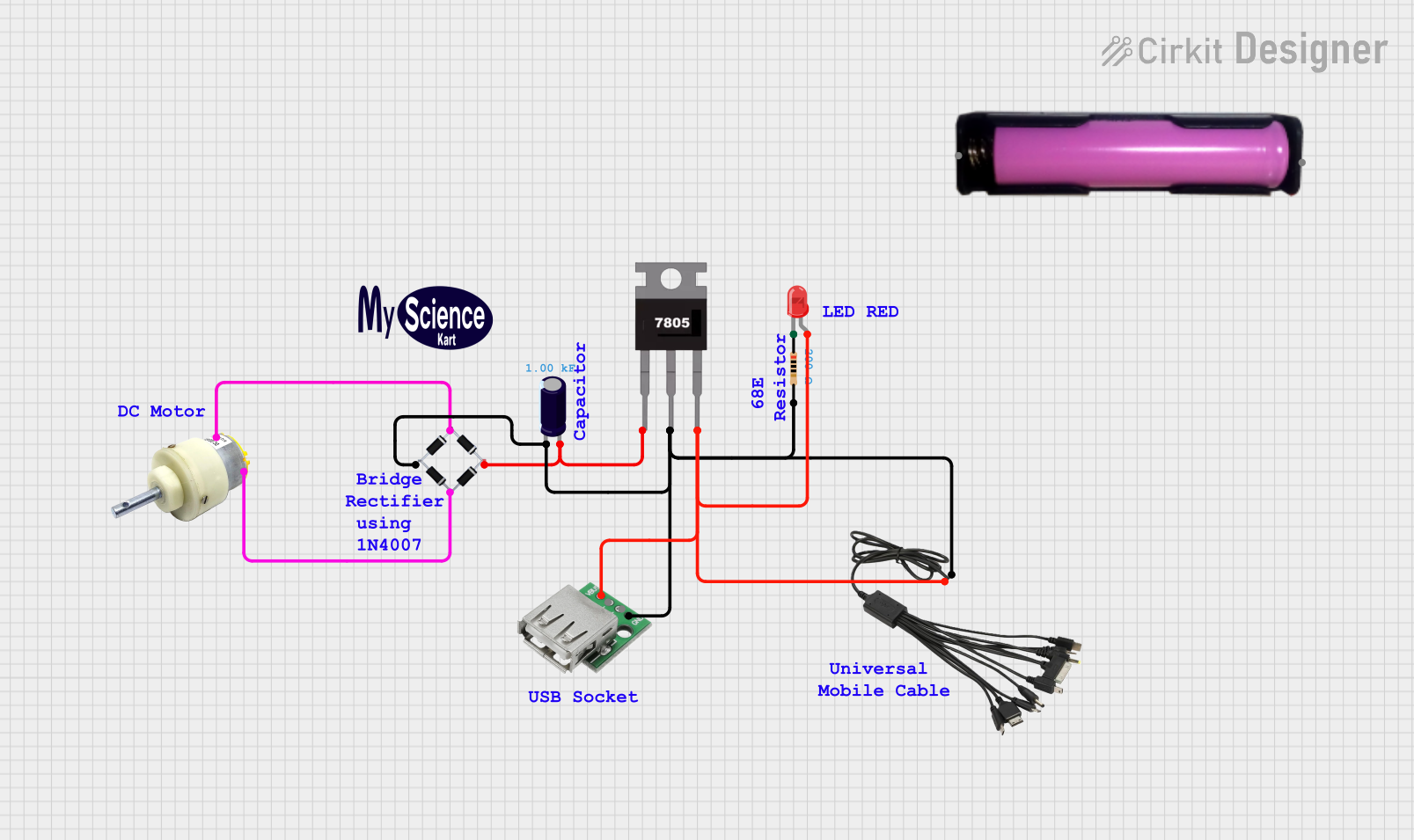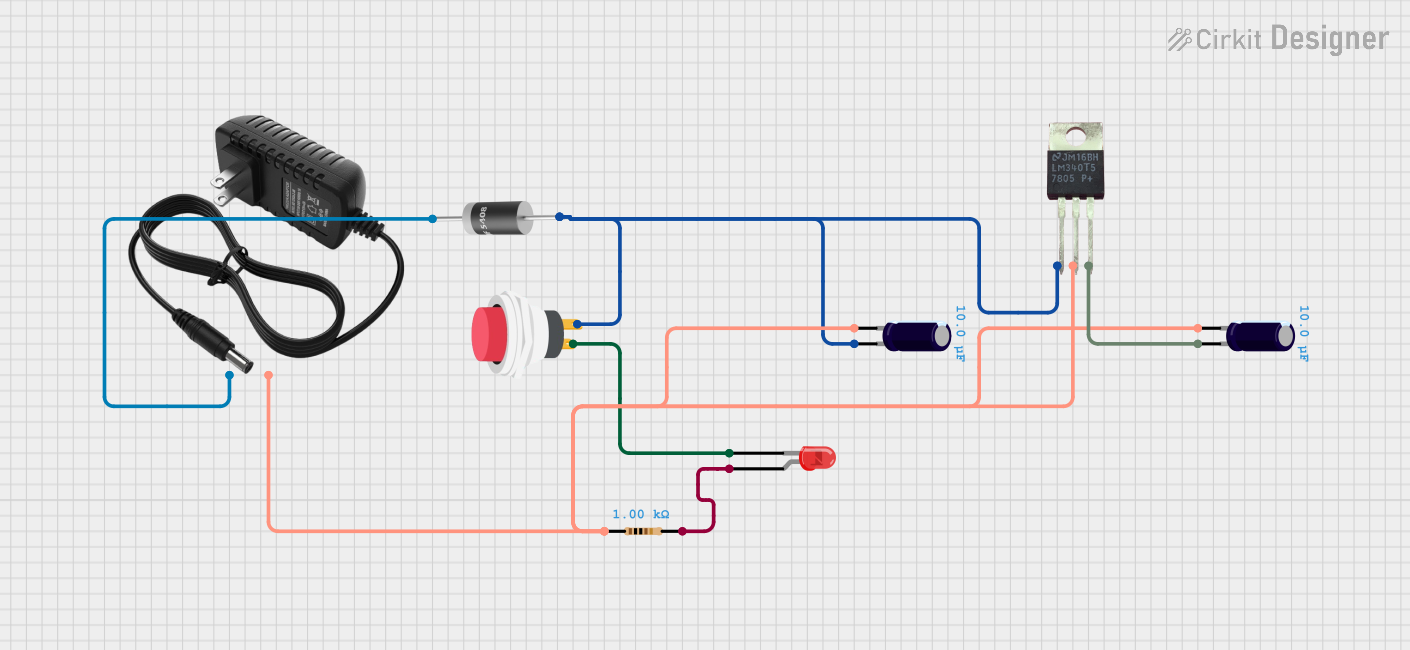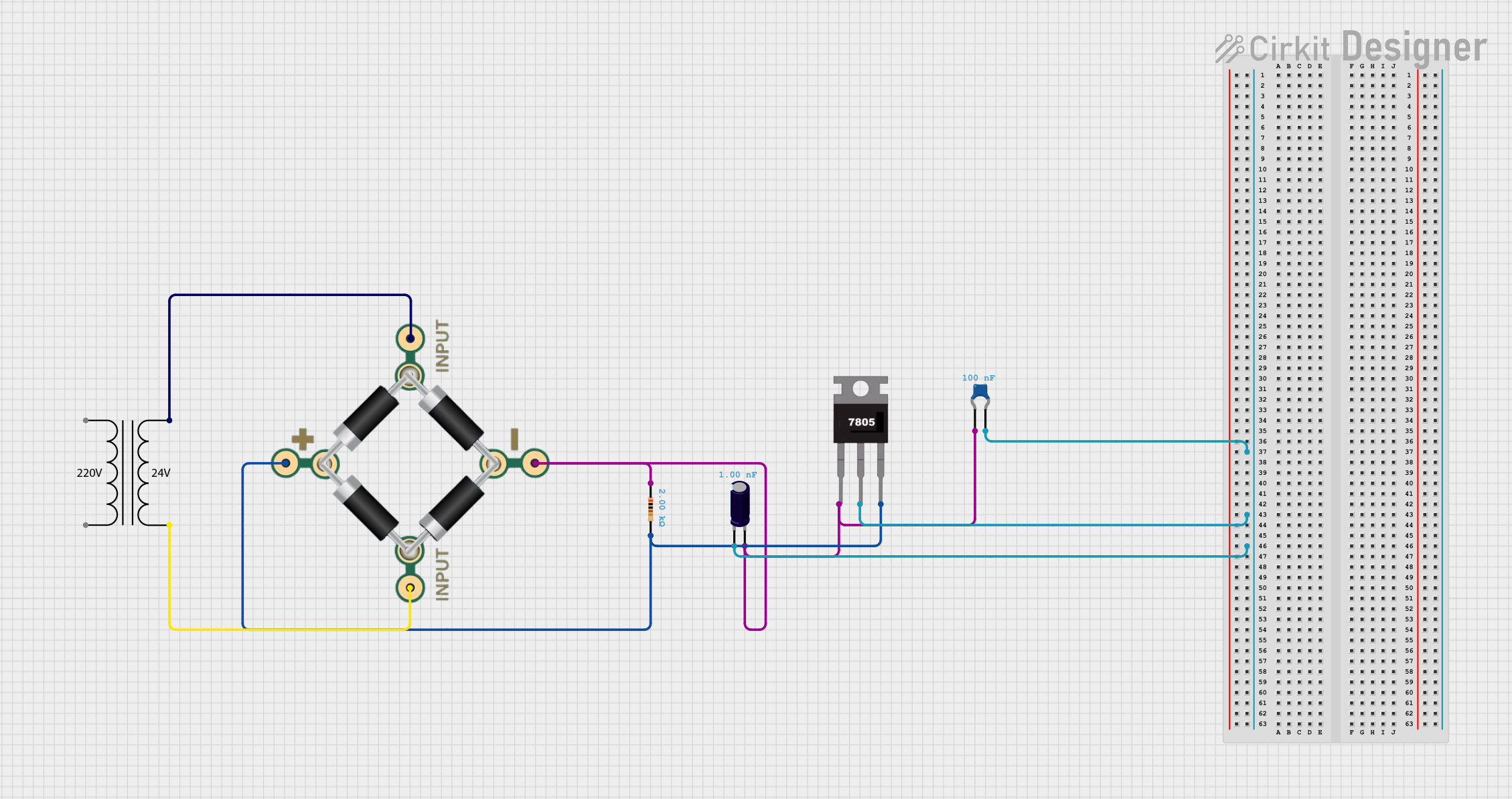
How to Use 5V Adapter: Examples, Pinouts, and Specs

 Design with 5V Adapter in Cirkit Designer
Design with 5V Adapter in Cirkit DesignerIntroduction
A 5V Adapter is an essential power supply device designed to convert alternating current (AC) from the wall outlet into a 5-volt direct current (DC) output. This adapter is commonly used to power a wide range of electronic devices, such as microcontrollers (e.g., Arduino UNO), development boards, mobile phones, and other USB-powered gadgets. Its stable 5V output ensures that these devices operate correctly without the risk of damage from voltage fluctuations.
Explore Projects Built with 5V Adapter

 Open Project in Cirkit Designer
Open Project in Cirkit Designer
 Open Project in Cirkit Designer
Open Project in Cirkit Designer
 Open Project in Cirkit Designer
Open Project in Cirkit Designer
 Open Project in Cirkit Designer
Open Project in Cirkit DesignerExplore Projects Built with 5V Adapter

 Open Project in Cirkit Designer
Open Project in Cirkit Designer
 Open Project in Cirkit Designer
Open Project in Cirkit Designer
 Open Project in Cirkit Designer
Open Project in Cirkit Designer
 Open Project in Cirkit Designer
Open Project in Cirkit DesignerCommon Applications and Use Cases
- Powering microcontroller boards like Arduino, Raspberry Pi, etc.
- Charging USB-powered devices such as smartphones and tablets.
- Supplying power to LED strips, DC motors, and other 5V electronic components.
- Used in DIY electronics projects and prototyping.
Technical Specifications
Key Technical Details
- Input Voltage: 100-240V AC (50/60Hz)
- Output Voltage: 5V DC
- Maximum Output Current: Typically 1A, 2A, or higher depending on the model
- Power Ratings: Varies with the maximum output current (e.g., 5W, 10W)
- Connector Type: USB Type-A, Micro-USB, Barrel Jack, or other types depending on the model
- Efficiency: >80% (typical for most adapters)
- Operating Temperature: 0°C to 40°C
Pin Configuration and Descriptions
| Pin Number | Description | Note |
|---|---|---|
| 1 | Positive Voltage (V+) | Typically the center pin in barrel jacks |
| 2 | Ground (GND) | Outer sleeve in barrel jacks |
Usage Instructions
How to Use the Component in a Circuit
- Verify Specifications: Ensure the adapter's output matches the voltage and current requirements of your device.
- Connect the Adapter: Plug the adapter into the wall outlet and connect the output connector to your device.
- Power On: Switch on the adapter if it has a power button. Some adapters are live as soon as they are plugged in.
Important Considerations and Best Practices
- Polarity: For barrel jack connectors, ensure the polarity matches your device (positive tip is standard).
- Overloading: Do not exceed the maximum current rating of the adapter to prevent overheating or damage.
- Ventilation: Keep the adapter in a well-ventilated area to prevent overheating.
- Quality: Use a certified and well-reviewed adapter to ensure device safety and longevity.
Troubleshooting and FAQs
Common Issues Users Might Face
- Device Not Powering On: Ensure the adapter is plugged in correctly and the outlet is functioning.
- Overheating: If the adapter gets too hot, disconnect it immediately and check if the current draw is within specifications.
- Voltage Fluctuations: Use a multimeter to check the output voltage. Replace the adapter if the voltage is not stable.
Solutions and Tips for Troubleshooting
- Adapter Not Working: Check the power outlet and the adapter's connection to your device. Try a different outlet if necessary.
- Insufficient Power: If the device is not functioning correctly, ensure the adapter's current rating is sufficient for the device's needs.
FAQs
Q: Can I use a 5V adapter with a higher current rating than my device requires? A: Yes, the device will only draw the current it needs. A higher current rating is generally safe.
Q: What happens if I use an adapter with the wrong polarity? A: Using an adapter with the wrong polarity can damage your device. Always check the polarity before connecting.
Q: How do I know if my 5V adapter is compatible with my device? A: Check your device's power requirements, which are usually listed on the device or in the user manual, and ensure the adapter meets these specifications.
Example Code for Arduino UNO
// This example demonstrates how to power an Arduino UNO using a 5V adapter.
void setup() {
// Initialize digital pin LED_BUILTIN as an output.
pinMode(LED_BUILTIN, OUTPUT);
}
void loop() {
// Turn the LED on (HIGH is the voltage level)
digitalWrite(LED_BUILTIN, HIGH);
// Wait for a second
delay(1000);
// Turn the LED off by making the voltage LOW
digitalWrite(LED_BUILTIN, LOW);
// Wait for a second
delay(1000);
}
// Note: The Arduino UNO can be powered through the barrel jack or the VIN pin
// using a 5V adapter. Ensure that the adapter's output is exactly 5V if you
// are using the VIN pin, as there is no onboard voltage regulation for this pin.
Remember to ensure that the adapter's output connector is compatible with the Arduino's power input jack. If using a USB connector, plug it into the Arduino's USB port. If using a barrel jack, plug it into the Arduino's DC power jack.